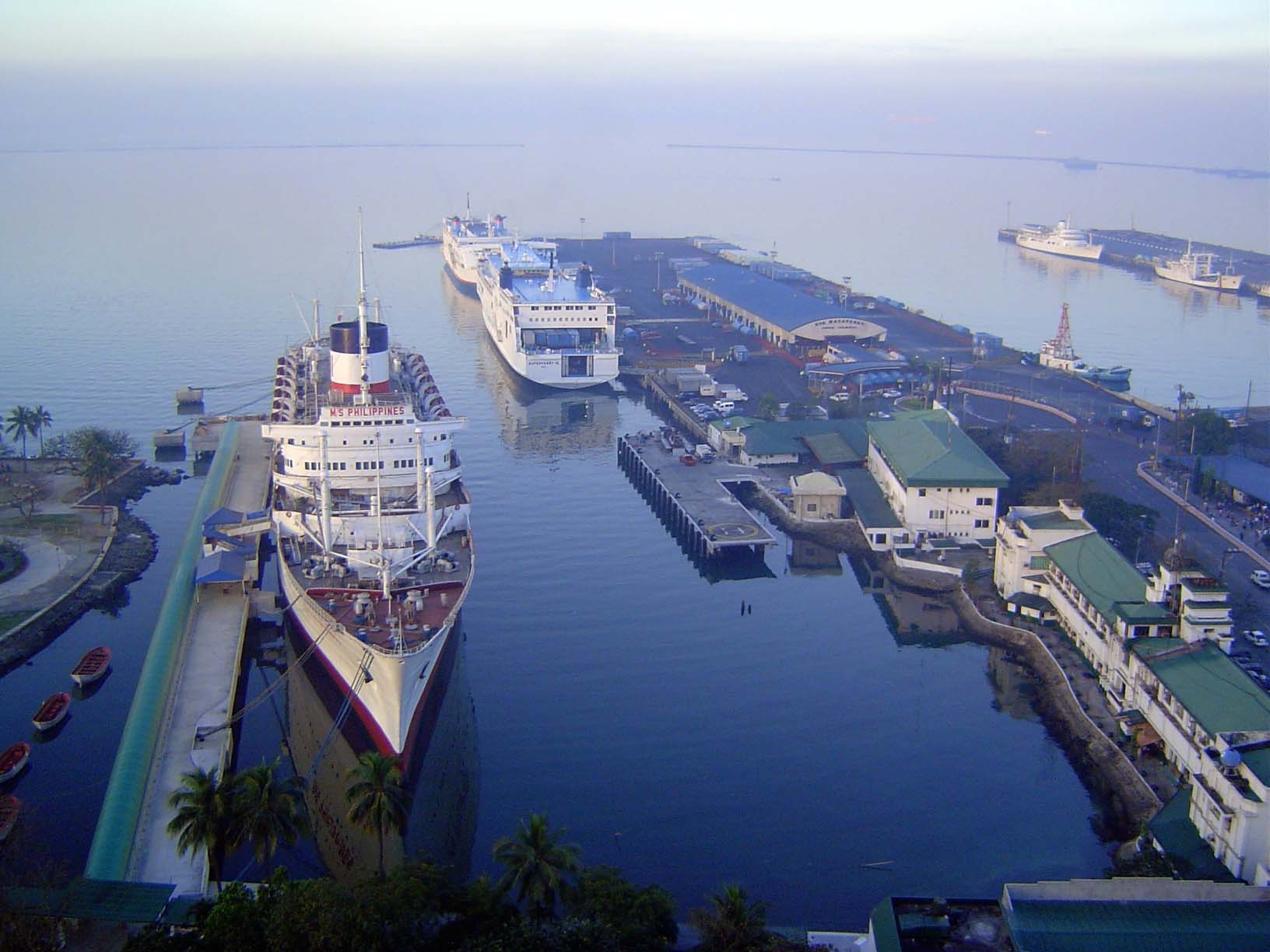
Early in the American period, a new port—South Port—was built on filled land on the western side of Intramuros. With five piers, the port is still very active, but it's also in very poor shape. Blame the shallow waters of Manila Bay, which preclude big ships. Blame the lack of railroads, which forces everything to come and go by truck. Blame the much lower rates offered a few miles to the north by Harbor Center Terminals.
Piers 13 and 15, seen from the Manila Hotel. The liner tied up at the left is the M.S. Philippines, which hasn't moved for years. The ship was built as the "Augustus" and was operated by the Italian Line, mostly going between Italy and South America from 1952 to 1976. It's still ready to go, if the owners can find a profitable route. On the right is the Eva Macapagal ferry terminal, which is very active day and night with ferries from other islands. The building belongs to the Philippine Coast Guard. It was here, by the way, that Pan American seaplanes—Juan Trippe's "clippers"—tied up in the 1930s as they hopped across the Pacific.
A closer view of the old Augustus. It was a very stylish ship.
A closer view of the ferry dock.
The old name's been painted over, but you might just be able to make it out. (In case you can't, the ship was formerly the Shinka Maru from Tokyo.)
The view north. The building on the left is the Philippine Port Authority; the one on the right, with the tower, is the Bureau of Customs.
The port authority building.
The customs building, wrapped in containers.
As the "Superferry" label suggests, these containers are used in inter-island service. Big container ships can't berth here. They unload instead at ports such as Taipei or Hong Kong.
The customs building itself is straight from the Burnham catalog. It, too, was rebuilt after the war.
Despite the clock, this picture was taken about 10 in the morning.
A classic warehouse: colorful, but empty.
Another warehouse has been commandeered by a community of the poor.
Local recreational resources include fighting cocks.
People, too, live alongside the walls.